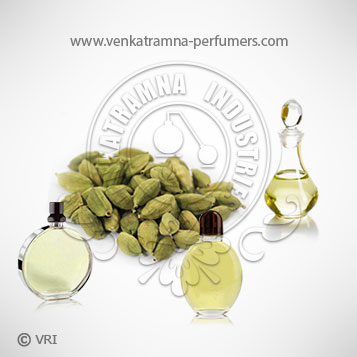
| Botanical Name | Elettaria cardamomum |
| Common Name | Cardamom, Cardomomi, Musore |
| Country of Origin | India, Nepal, Bhutan |
| Solubility | soluble in water, insoluble in oil |
| Specific Gravity | Not Applicable |
| Optical Rotation | -16 +20 |
| Refrective Index | 1.354 - 1.758 |
| PlantPart | Seed |
| Bland With | : Rose, Orange, Bergamot, Cinnamon Bark, Clove Bud, Caraway and Cedarwood |
| CAS No | 96507-91-4 |
| Flash Point | 215°F |
| Extraction Method | Rose, Orange, Bergamot, Cinnamon Bark, Clove Bud, Caraway and Cedarwood |
Cardamom oleoresin is obtained from the dried cardamom pods. The greenish to brown semi solid liquid has a great potential to become prime ingredient for not only as food preservative but also flavor enhancer. The oleoresin is full with triglyceride and steroid components. It is non-toxic, non-irritant and nonsensitizing.
Cardamom was well known in ancient times. The Egyptians used it in perfumes and incense and chewed it to whiten their teeth. The Romans used it for their stomachs when they over-indulged. The Arabs used it ground in their coffee. It is an important ingredient in Asian cooking.
Color : Brown clear liquid with Herbal Characterestic Cardamom,
Aroma : Cardamom Essential Oil is sweet, spicy and almost balsamic in fragrance
Volatile oil content: 14% Chemical compounds: Alpha Terpinyl Acetate, Cineol, Linalol, Linalyl Acetate and Limonene
Extensively used as a domestic spice, especially in India, Europe, Latin America and Middle Eastern countries. The oleoresin is employed in some carminative, stomachic and laxative preparations. Widely used as a fragrance component in soaps, cosmetics and perfumes especially oriental types. Important flavor ingredient particularly in curry and spice products.